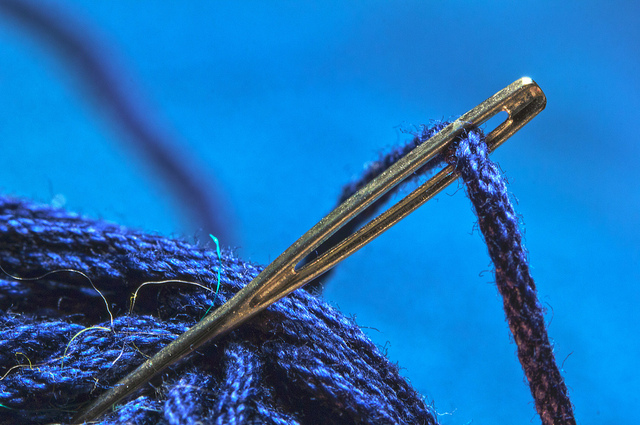
Tailoring or sewing services in Singapore can range from S$5-40 depending on the type of clothing article. For instance, altering straight-cut jeans range from S$5-12 while altering of jackets can range from S$12-36. Some of the prices are too much if you asked me. You might as well buy a new one.
Aside from the costs, the standard waiting time for its collection can last from 1-14 days. And, if you do not have the time, you might as well buy a new one.
To avoid this dilemma, it is important to master some simple stitches that you can immediately use as the need rises. Do not fret if you have zero knowledge on sewing because mastering the basics can be done at home. All you have to do is to browse through the free tutorial videos available online. Here are the simple stitches you may start with:
1. RUNNING OR STRAIGHT STITCH
The easiest and the simplest of all the stitches in this list is the running stitch, otherwise known as the straight stitch. This stitch involves taking the needle repeatedly under then over. You shall see the thread forming a line throughout the fabric. This is useful for repairing torn out parts of the pockets or sleeves.
2. WHIPSTITCH
Let us “up the ante” a little bit with the diagonal techniques of whipstitch. A whipstitch is typically used to sew to separate pieces of material together. It is perfect for altering or repairing trousers, sleeves, and jackets because it leaves nearly invisible traces of thread. Follow this video to learn about the fascinating whipstitch:
3. SEW A BUTTON
A usual situation that needs immediate repair is clothing that lacks buttons. Learning how to sew a button is quick and uncomplicated. The first thing you must do is to choose a suitable button and a matching thread. You may check if the manufacturer has included an additional button. Then, be guided by this short video:
4. SEW A HEM
From your table cloth to your boxers and gowns, hems are found on most common articles of clothing and fabric. This is why it is important for you to be familiarizing on how to sew a hem in case yours gets loose or in case you want to make your own. You can either use a catch stitch (i.e., exposed) or a slip stitch (i.e., invisible) to sew a hem. Learn how to make these two stitches, here:




